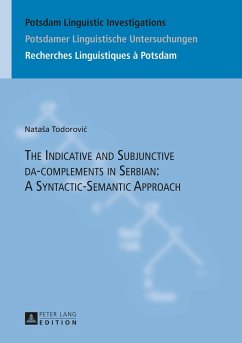This study analyzes the indicative and subjunctive da-complements in the Serbian language while comparing and contrasting them with similar finite constructions in other Slavic and Balkan languages. In complex structures, semantic properties of the matrix verb, homophonous da, and aspectual and tense properties of the embedded verb all contribute to interpretations of the morphologically unmarked subjunctive and indicative moods in the Serbian language. Merging Giannakidou's theory of mood and veridicality with Progovac's clausal structure, the author suggests that the choice of the indicative or subjunctive complement determines negation interpretation and implies that clitics in Serbian are not always restricted to the second position.








